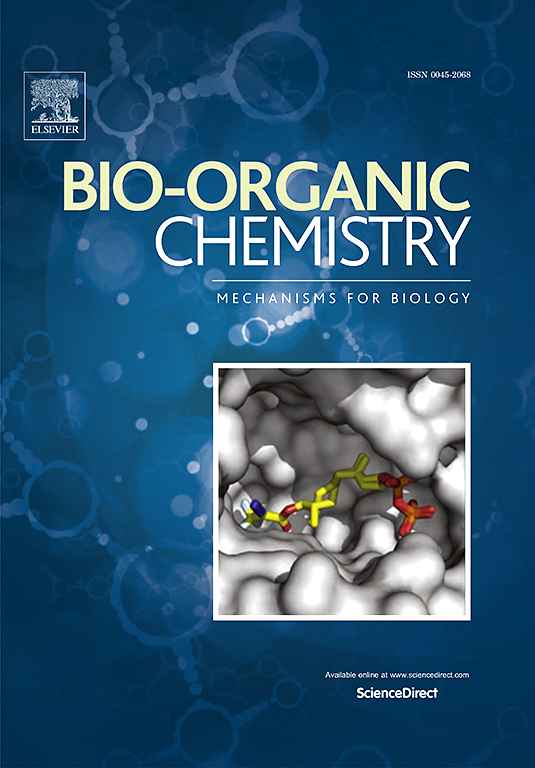Design and synthesis of a highly polarity-sensitive fluorescent probe and its application in tumor cell imaging
IF 4.5
2区 医学
Q1 BIOCHEMISTRY & MOLECULAR BIOLOGY
引用次数: 0
Abstract
Among cancer patients, those in advanced stages generally face higher mortality rates, highlighting the importance of early diagnosis in improving cure rates and survival outcomes. Compared to normal cells, tumor cells exhibit a lower polarity in their microenvironment, providing a promising avenue for early cancer detection. It is feasible to distinguish tumor cells from normal cells by leveraging the fluorescence response of probes to polarity. In this study, we designed a fluorescence probe, PCC, with high sensitivity to polarity for early cancer diagnosis. The probe demonstrated a remarkable fluorescence intensity increase of 100-fold in a low-polarity solvent (1,4-dioxane) compared to a high-polarity solvent (water). Additionally, PCC exhibited excellent tumor-targeting ability, large Stokes shift, strong anti-interference capability, and high photostability. When applied to tumor cells (HeLa and CT26、SGC-7901) and normal cells (RAW 264.7、HUVEC、L-02), the probe produced a fluorescence intensity difference exceeding fourfold. These findings indicate that PCC, as a polarity-sensitive fluorescence probe, holds significant promise for early cancer diagnosis.

求助全文
约1分钟内获得全文
求助全文
来源期刊

Bioorganic Chemistry
生物-生化与分子生物学
CiteScore
9.70
自引率
3.90%
发文量
679
审稿时长
31 days
期刊介绍:
Bioorganic Chemistry publishes research that addresses biological questions at the molecular level, using organic chemistry and principles of physical organic chemistry. The scope of the journal covers a range of topics at the organic chemistry-biology interface, including: enzyme catalysis, biotransformation and enzyme inhibition; nucleic acids chemistry; medicinal chemistry; natural product chemistry, natural product synthesis and natural product biosynthesis; antimicrobial agents; lipid and peptide chemistry; biophysical chemistry; biological probes; bio-orthogonal chemistry and biomimetic chemistry.
For manuscripts dealing with synthetic bioactive compounds, the Journal requires that the molecular target of the compounds described must be known, and must be demonstrated experimentally in the manuscript. For studies involving natural products, if the molecular target is unknown, some data beyond simple cell-based toxicity studies to provide insight into the mechanism of action is required. Studies supported by molecular docking are welcome, but must be supported by experimental data. The Journal does not consider manuscripts that are purely theoretical or computational in nature.
The Journal publishes regular articles, short communications and reviews. Reviews are normally invited by Editors or Editorial Board members. Authors of unsolicited reviews should first contact an Editor or Editorial Board member to determine whether the proposed article is within the scope of the Journal.
 求助内容:
求助内容: 应助结果提醒方式:
应助结果提醒方式:


